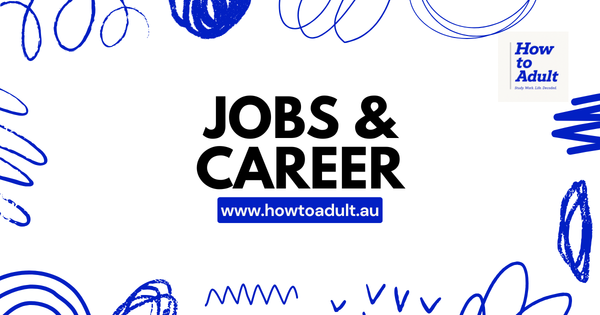Getting Your First Car in Australia: A Real-World Checklist for New Drivers
Getting your licence is only the beginning. Here’s a practical guide to what comes next — from finance and rego to insurance, pink slips, and buying your first car (new or used).

So You Got Your Licence — Now What?
You’ve probably seen plenty of guides online about getting your Ls and Ps — so we won’t repeat all of that here. But what happens after you pass your test? This post is about the next chapter: getting your first car, and all the confusing (and often expensive) things that come with it.
Whether you’re buying new or second-hand, paying upfront or through a loan, here’s a comprehensive checklist to help you navigate the road ahead.
✅ Before You Buy: Know What You’re Getting Into
- Do you have your full or provisional licence?
(You can buy a car without one, but you can’t drive it legally.) - Know your budget — including more than just the car.
Think insurance, rego, repairs, fuel, parking. - Decide: New vs Used?
- New = warranty, no hidden problems, more expensive
- Used = cheaper upfront, but do your homework (see below)
First things first: you don’t technically need a licence to own a car, but you do need one to drive it legally. So if you’re planning to hit the road yourself, you’ll need at least your Red Ps or an overseas licence conversion.
Next, set a realistic budget. The sticker price isn’t the only cost — you’ll also need to budget for things like registration, insurance, regular servicing, fuel, and ongoing maintenance. As a rough guide, even a basic second-hand car could come with $2,000–$4,000 in setup and running costs during the first year.
It’s also time to decide: new or used? A brand-new car gives you peace of mind with warranties and zero wear-and-tear, but it comes with a higher price tag (usually $20,000+). A second-hand vehicle might cost as little as $3,000–$10,000, but comes with risks — which we’ll help you manage.
🚗 Buying the Car: Where and How
- Where to look:
Car dealerships, online marketplaces (Carsales, Gumtree, Facebook), auctions. - Private seller vs dealer:
- Private is cheaper but higher risk.
- Dealers offer warranties and consumer protections.
- Pre-purchase checks:
- PPSR Check: Make sure it’s not stolen or under finance.
- Mechanic inspection: Especially for used cars.
- Service history: Ask for logbooks or receipts.
You can buy a car through a dealership, a private seller, an online marketplace like Carsales or Facebook, or even at auction. Dealerships usually cost more but offer consumer protections and warranties. Private sales are cheaper but require more caution — and more homework.
Before you buy, always run a PPSR check (around $2–$10) to make sure the car isn’t stolen, written off, or under finance. If you’re buying used, organise a pre-purchase inspection with a mechanic — this usually costs $150–$250, but it could save you thousands.
Ask the seller for the service history, logbooks, and proof of any recent repairs. A lack of paperwork isn’t always a red flag, but it should make you extra cautious.
💰 The Money Side: How You’ll Pay
- Paying upfront?
Bank transfer or certified cheque — avoid large amounts of cash. - Financing a car?
Make sure you understand:- Total repayment amount
- Interest rate
- Fees
- Loan conditions
- Ongoing costs:
Fuel, servicing, repairs, tolls, rego, insurance, parking
If you’re paying upfront, use a bank transfer or certified cheque — and avoid large amounts of physical cash for safety reasons.
If you’re using a loan, understand the total cost of the loan, not just the monthly payments. For example, a $10,000 car loan over 5 years with 8% interest might end up costing you around $12,100–$13,000 total once fees and interest are included. Make sure you understand the fine print.
Then there are the ongoing costs:
- Fuel: ~$80–$200/month depending on use
- Servicing: ~$200–$400 every 6–12 months
- Registration: ~$300–$1,000/year (varies by state and car)
- CTP insurance (Green Slip): ~$400–$700/year
- Comprehensive insurance: ~$600–$1,500/year depending on age, car, and record
- Parking or tolls: Depends on where you live
📋 Registration & Paperwork: Welcome to Adult Admin
- Green Slip (CTP Insurance):
Compulsory third-party insurance. Needed before rego. - Pink Slip (eSafety Check):
Needed if the car is more than 5 years old in NSW. - Vehicle Registration:
You can register it under your name at Service NSW (or your state authority). - Number Plates:
Assigned at rego. Custom plates cost extra.
Before you can legally drive your car, you’ll need to get it registered under your name.
If you’re in NSW, this means:
- CTP Insurance (Green Slip) — Compulsory third-party insurance to cover injury to others. You need this first. (~$500/year)
- Pink Slip — A safety check inspection required if the car is more than 5 years old. (~$40–$60)
- Rego transfer — Head to Service NSW to register the car and get number plates assigned. If you want custom plates, expect to pay extra (from $100–$500+ depending on design).
- Stamp Duty — Based on the sale price. Usually 3–4% of vehicle value (e.g. ~$400 for a $10,000 car).
Don’t forget to bring your proof of ID and a completed notice of disposal if it’s a private sale.
🛡️ Insurance & Protection: What You Actually Need
- CTP (Compulsory): Covers injuries to others.
- Third Party Property: Covers other people's cars/property.
- Comprehensive: Covers damage to your car too.
- Always compare prices and read the Product Disclosure Statement (PDS).
There are different levels of car insurance.
- CTP (Green Slip) is mandatory — it covers injuries to other people.
- Third Party Property covers damage to other people’s vehicles and property, but not your own. (~$300–$700/year)
- Comprehensive Insurance covers theft, damage to your own car, natural disasters, etc. Highly recommended if you’re buying anything worth more than $5,000. (~$1,000/year for new drivers)
Compare providers like NRMA, Budget Direct, or AAMI — and always read the PDS before committing.
🛠️ Maintenance & First-Time Safety
- Routine servicing: Every 10,000–15,000 km or annually.
- Tyre checks, oil, brakes: Learn the basics or find a good mechanic.
- Keep records: Service history boosts resale value and helps with warranties.
- Roadside assistance: Optional, but good peace of mind (NRMA, RACV etc.)
Every car needs regular maintenance to stay safe and legal. You’ll need to budget for routine servicing every 10,000–15,000 km (usually every 6–12 months), tyre replacements every couple of years (~$400–$800 for a full set), and occasional fixes like brakes, wipers, or battery replacements.
It’s worth joining a roadside assistance service like NRMA or RACV (~$100/year) — especially if you’re nervous about breakdowns.
Keep all receipts and service records. These help with resale value and may be required for warranty claims.
🚘 First-Time Buyer Tips
- Don’t rush. Ask questions, test drive the car, walk away if unsure.
- Don’t forget transfer fees, stamp duty, and rego cost.
- Join car-related Facebook groups or subreddits to learn from others.
- Avoid buying your first car sight unseen. Always inspect it in person.
Don’t rush the decision — even if the deal looks amazing. Always inspect the car in person, ask for the VIN (Vehicle Identification Number), and test drive it during daylight.
Don’t forget the transfer fee and stamp duty (which you pay when registering the car), and plan for a few hundred dollars in unexpected setup costs — like a replacement key, new tyres, or emergency repairs.
Online communities like Reddit’s r/AusFinance or local car Facebook groups can also be great places to ask beginner questions without judgment.
Final Thoughts
Buying your first car is both exciting and overwhelming. It’s a big financial decision, but also a life upgrade — unlocking freedom, flexibility, and responsibility. The good news is: you don’t need the perfect car. You just need something reliable, safe, and suited to your lifestyle and budget.
Start with what you can afford. Build your knowledge as you go. And remember — the real journey isn’t just getting the car… it’s learning how to look after it.



